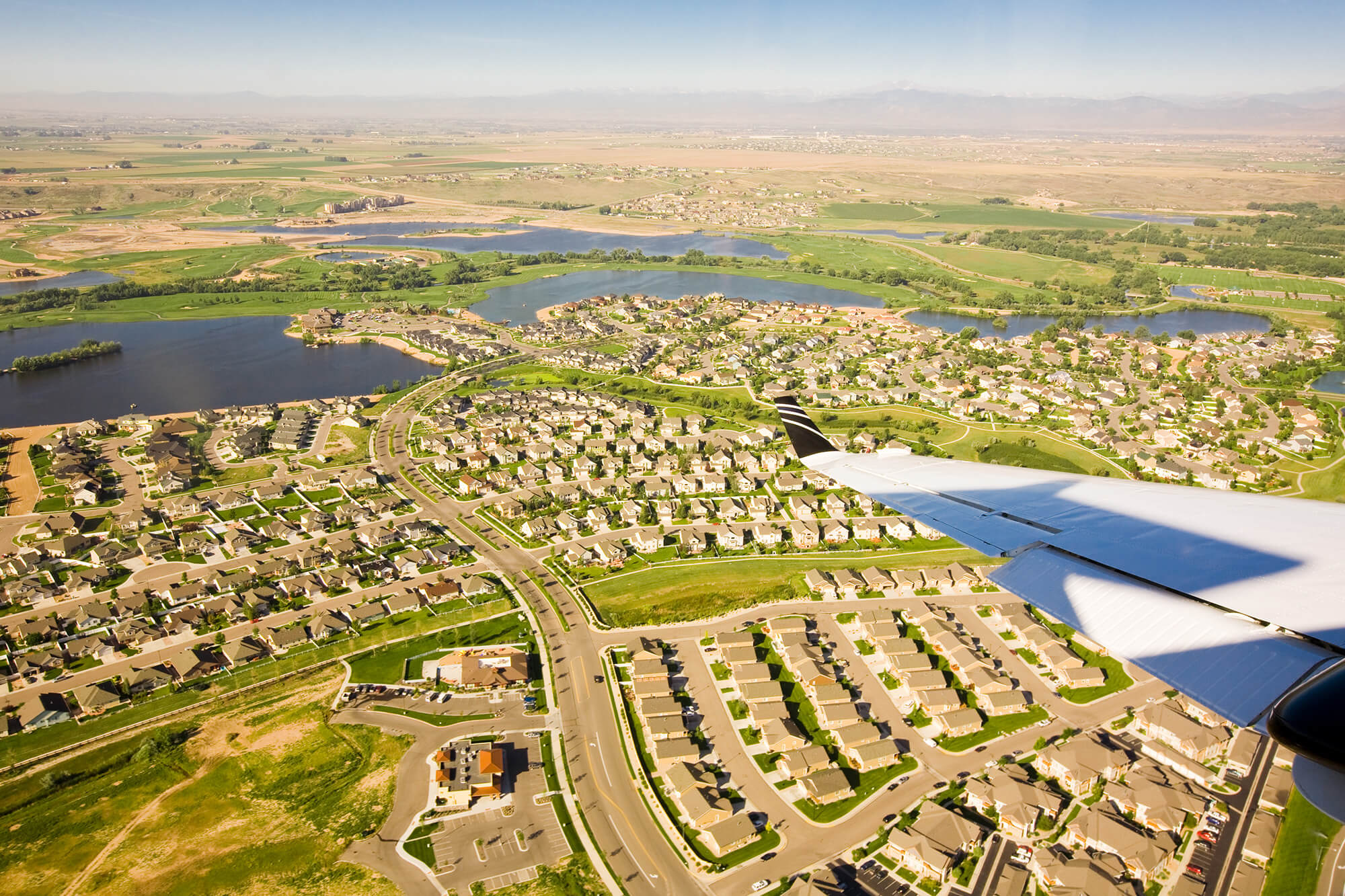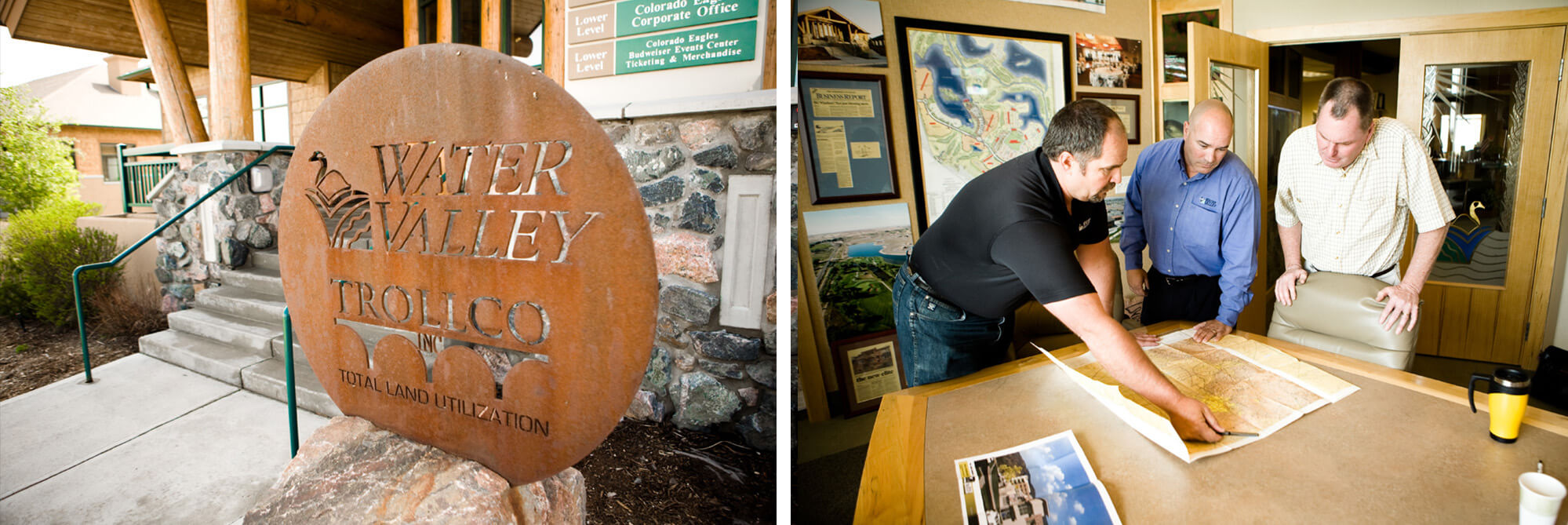
Business Aviation helps NBAA member Water Valley
September 1, 2008

Northern Colorado has a thriving economy and a booming real estate market. However, people are drawn to the region not just by the possibility for economic expansion, but to experience the breathtaking natural scenery and abundant recreational resources. With a vision for smart growth designed to integrate mixed-use communities into the fabric of the region, Water Valley Land Company has more than 4,500 acres of master-planned commercial and residential communities that offer dramatic mountain views within the bustling corridor that encompasses Windsor, Loveland and Greeley.
Colorado native Martin Lind, president and owner of Water Valley Land Company, understands the value of the land. He grew up on a family farm in Windsor and tried his hand at agriculture. “After getting wiped out by weather for two seasons, I figured I might be cut out for something else,” he said. So he applied his knowledge of land use, water rights and development trends in the region to create his company.
Lind started the business 20 years ago with no assets. Today, the family-owned company has 130 employees managing the properties that are sold for commercial and residential uses, including subdivisions, wellness centers and golf courses.
A Company Takes Flight
Given the vast tracts of land that Lind and his associates must cover in the course of their work, business aviation has been a natural fit for the company. In 2000, Lind responded to an advertisement for the lease of a King Air 200, and entered into an agreement with two business partners. “We set up the partnership to ensure that the plane was used most efficiently,” Lind recalled. The use of business aviation has been fundamental to his company’s success ever since.
Today, Lind and his partners share a King Air 350, and Water Valley uses the airplane, typically with all the seats full, once or twice a week, or about 450 hours per year, to fly missions mostly within a 600-mile radius of their home base of Fort Collins-Loveland Municipal Airport (FNL).
As an example, Lind pointed to a recent mission to Ohio, which was completed in nine hours. The parties involved in a deal related to the sale of property with medical facilities were interested in seeing the site for themselves, so they climbed aboard the King Air. “The airplane is a great tool for us to bring people to see our properties first hand,” Lind said, “We have a competitive advantage in that we can let our customers view a site with their own eyes.”
The scouting party, which included architects and engineering contractors, started its day at 4:00 a.m., with breakfast on the plane. The airplane made a non-stop flight from Colorado to Akron, the principals saw the development, and the aircraft stopped briefly in DuPage, IL for fuel before returning home. “We never could have made that kind of trip in one day via the airlines,” noted Lind.

The plane not only transports Water Valley people and their customers to far-flung development sites; it also is a productivity generator, serving as a flying office in which Lind and his staff can coordinate business activities and plans. “Some of my best work time is in the air,” said Lind.
A Focus on Safety
A stringent training and safety regimen guides Water Valley’s extensive use of the airplane. Four pilots fly for Water Valley, and each undergoes recurrent training at least once a year at FlightSafety International. In addition, company personnel have attended FACTS emergency evacuation training, and Water Valley relies on MedAire for medical assistance and equipment, like their onboard defibrillator.
Craig Fitzsimmons, Water Valley’s director of aviation, has worked hard to establish a set of standards for the company that will ensure continued safe and efficient operations. To that end, he is adopting many of the guidelines outlined in the International Standard for Business Aviation Operations (IS-BAO), a set of best practices that has been developed by the International Business Aviation Council and its member associations, which include NBAA. “IS-BAO is something that is well worth getting,” Fitzsimmons noted, “because even small flight departments can benefit from the guidance it provides.”
Fitzsimmons’ efforts to structure Water Valley’s aviation operation have benefited from his participation in NBAA’s Corporate Aviation Management Committee (CAMC), which, in partnership with NBAA’s professional staff, administers the Association’s Certified Aviation Manager (CAM) Program.

“Working with these people has been the most rewarding aspect of my work on the CAMC,” added Fitzsimmons, who is now the committee’s vice chair and chair of the subcommittee that focuses on the NBAA Management Guide and the Association’s Compensation & Benchmark Survey.
“The people I’ve worked with, and the direction they’ve given me and the committee, have been valuable, not just to my work on the committee, but to my career. All of this interaction helps keep me up-to-date on industry issues and trends.”
Giving Back to The Community
Fitzsimmons is not the only Water Valley person involved in aviation affairs. Lind is trying to give something back to his hometown by working to improve Fort Collins-Loveland Airport so that it can grow into a center of transportation and business.
Lind and his team are not without obstacles in their efforts to strengthen the airport. Because two cities claim owner-ship of the facility, planners are often beset with competing priorities and processes to get approvals on improvement projects.
Additionally, airport officials are revising the policies for accessing the airport from private land, as well as those for land leases, either of which could affect potential private-sector use of properties surrounding the airport.

Nevertheless, Lind is undeterred because he sees businesses making big investments in the area. An $80 million dollar Embassy Suites is under construction. A hospital network has just opened a $250 million dollar state-of-the-art facility one mile from the airport. More than a million square feet of new retail space is planned within five miles of the airport, and local planners are designing the largest mall between Denver and Canada.
“There’s $10 billion in private-sector investment coming into all these projects, but no one has laid the groundwork for making the airport a part of business development in the area,” Lind says. “I’m trying to get local government officials to understand the tremendous benefit that will come from a serious investment in Loveland Airport.”
Lind’s vision for the airfield is reflected in his work on a master plan for FNL, which includes new runways and rail infrastructure. Lind believes the upgrades, taken together, could ultimately produce 5,000 new jobs in the local area.
“Adding rail and other services for reaching Loveland will make the airport an even stronger asset than it is today,” he said. “Water Valley is competitive in everything we do, and I want that approach reflected in our work at the airport – I want Loveland to be the best.”
“The airport is located right off the interstate,” Lind noted, and it’s within 30 miles of other major highways. “The Northern Colorado region is growing. Along with the city of Loveland, the communities of Fort Collins, Windsor and Greeley are on a growth trajectory, and the airport is right in the center of all those places. The timing is perfect to start making the vision for Loveland a reality.”


 International Business Aviation Council Ltd.
International Business Aviation Council Ltd.